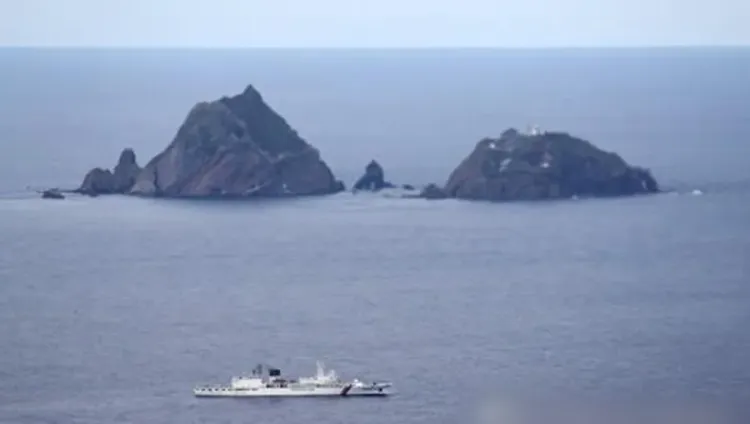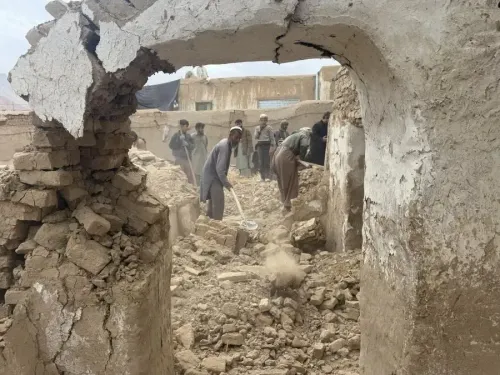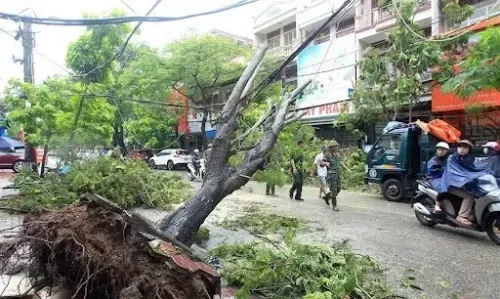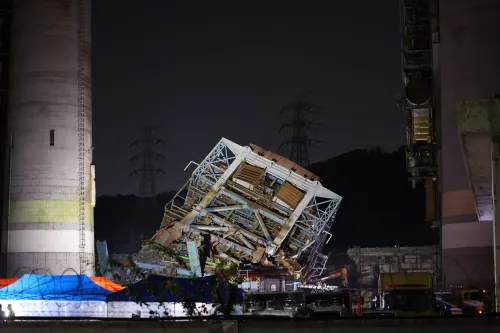Did South Korea Successfully Repatriate Six North Koreans Rescued at Sea?

Synopsis
Key Takeaways
- Six North Koreans were successfully repatriated by South Korea.
- The repatriation occurred via the maritime border in the East Sea.
- All repatriated individuals expressed a desire to return home.
- The process faced challenges due to a lack of communication.
- President Lee Jae Myung is actively seeking to improve relations with North Korea.
Seoul, July 9 (NationPress) On Wednesday, South Korea repatriated six North Koreans through the maritime boundary in the East Sea, months after they were rescued after drifting into southern waters.
A wooden vessel carrying the fishermen crossed the Northern Limit Line (NLL), the unofficial maritime boundary, at approximately 8:56 am, as confirmed by a representative from South Korea's unification ministry.
The boat navigated towards two North Korean ships, including a patrol vessel, positioned across the NLL, and the three vessels subsequently traveled northward together, the official reported.
In May, South Korea had rescued four North Koreans aboard a ship that had drifted into South Korean waters, following a similar incident in March where two North Koreans were saved in the Yellow Sea. All individuals expressed their desire to return to the North.
The repatriated vessel is one of the boats from which the North Koreans were rescued; it was repaired for their return, while another was deemed unfit for use due to damage.
"The repatriation process could have been executed much more efficiently if there had been better communication between the two Koreas," stated the ministry official.
Ministry spokesperson Koo Byoung-sam emphasized the humanitarian grounds for returning the individuals safely and promptly earlier this week.
The official noted that the government had confirmed the North Koreans’ intention to return home multiple times before their repatriation.
This repatriation occurred despite North Korea's lack of response to Seoul's repeated requests, made through the US-led UN Command (UNC), to organize the North Koreans' return, with inter-Korean communication channels still cut off amid strained relations, as reported by Yonhap news agency.
Seoul notified Pyongyang of the repatriation's location and time through the UNC channel, but the North Korean ships arrived for the transfer without any prior notice or response, according to the ministry representative.
Seoul opted for a maritime route for the repatriation instead of the land route via the inter-Korean truce village of Panmunjom, as on-land repatriation could potentially escalate tensions given Pyongyang's unresponsiveness on this matter, the official explained.
This repatriation coincides with President Lee Jae Myung's efforts to improve strained relations with North Korea in an attempt to reduce military tensions and foster peace.
Since assuming office last month, Lee has ordered a cessation of military loudspeaker broadcasts against North Korea and requested civic groups to halt their anti-Pyongyang activities, such as sending propaganda leaflets across the border.









